A great nonstick pan is a kitchen essential, but these stovetop workhorses can be temperamental, and one wrong move can leave you with a ruined pan. Unfortunately, when it comes to cooking with, cleaning and storing a nonstick pan, there’s a lot of room for user error.
Nonstick pans have very specific rules when it comes to cooking, cleaning and storing. To break down the proper way to use, clean and store nonstick cookware, we tapped experts Wendy Dyer, a product director at All-Clad, and Nate Collier, the director of marketing communications for Le Creuset, who explained the dos and don’ts of caring for nonstick surfaces.
Nonstick pans do require special care to ensure they last a long time. There are cooking tools that are safe for use on a nonstick surface, and it’s important to know what they are. Similarly, when cleaning a nonstick cooking surface, certain cleaning agents and tools are to be avoided. And lastly, correctly storing a nonstick pan is crucial to avoiding damage. These cooking, cleaning and storage products are the right ones to use with nonstick pans.
$69.95 at Amazon
The choice of cooking tools is critical when it comes to safely using a nonstick pan. “Creuset silicone tools are recommended,” Collier says, adding, “you can also use wooden or heat-resistant plastic tools.”
$25.89 at Amazon
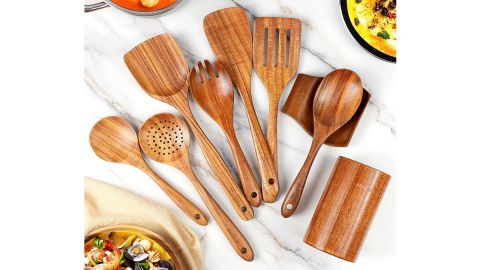
Wooden cooking utensils can also be used for deep cleaning; Dyer recommends boiling a 50/50 mixture of white vinegar and water, and using a wooden spoon or spatula to gently scrape stubborn residue from the pan’s surface.
$7.72 at Amazon
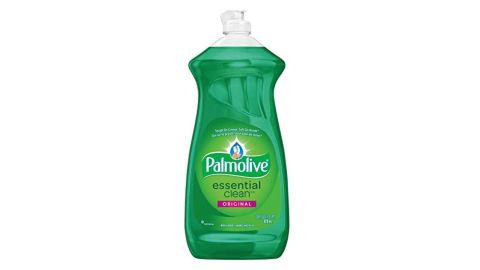
Both Dyer and Collier recommend washing nonstick cookware by hand, rather than in the dishwasher — even if the pan is dishwasher safe. “To maximize the life of your nonstick,” Dyer says, “avoid using a dishwasher because of the harsh detergents, high temperatures and residue left afterward.”
$5.52 at Amazon

When washing nonstick cookware, be sure to use a sponge that is safe for the material and won’t cause scratching or degradation of the nonstick surface. Avoid using harsh scouring pads, and never use steel wool on a nonstick surface.
$17.99 at Amazon

If you dislike sponges, try our favorite Swedish dishcloth. This option is ultra absorbent and comes in a pack of fun colors so you can designate certain cloths for certain jobs. Read more in our review here.
$16.99 at Amazon
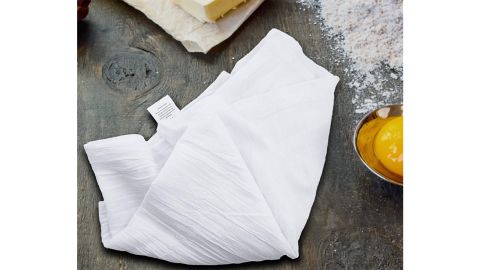
After washing a nonstick pan, dry it thoroughly using a lint-free dish towel before storing. Flour sack dish towels can also be used to protect nonstick pans while being stored; simply place the towel in the pan before stacking another pan on top.
$6.72 at Amazon
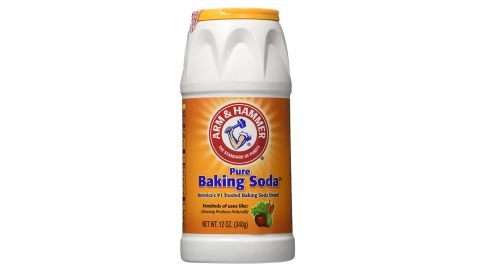
A paste of baking soda and water can help to gently scour stubborn buildup from nonstick surfaces.
$34.99 at Amazon
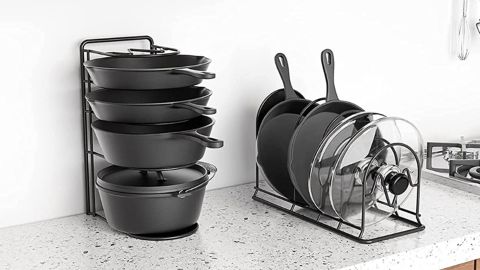
A pot rack organizer can help to protect nonstick cooking surfaces while in storage. Never stack pots and pans directly inside a nonstick pan to avoid damaging the surface.
$11.69 at Amazon
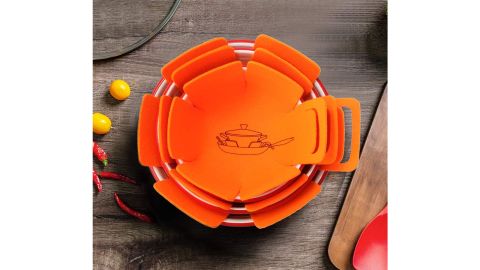
Felt and silicone pot and pan protectors are another way to ensure a nonstick pan doesn’t get damaged while not in use.
“For general cleaning and care,” Collier says, “cool the pan for a few minutes before cleaning. Do not plunge a hot pan into cold water. Though the pan is dishwasher-safe, washing by hand is recommended.” Collier and Dyer recommend washing a nonstick pan following these steps:
Step 1: After cooking, clean shortly afterward once the pan is cool to the touch.
Step 2: If there is significant residue in the pan, soak in warm water and dish detergent for a few minutes before going in with a sponge. If not, simply wash the pan with a sponge and hot, soapy water.
Step 3: Wipe the pan clean with a sponge or dishcloth.
Step 4: Rinse with warm water.
Step 5: Dry with a soft towel.
To remove heavy residue, Dyer recommends two methods for deep cleaning a nonstick pan:
Method 1: Boil a 50/50 mix of white vinegar and water in the pan while carefully using a wooden spoon to remove stuck-on bits. From there, soak the pan in hot, soapy water to help release the food.
Method 2: Make a paste of baking soda and water, and use a Dobie Pad to scour the nonstick surface. Dyer notes that this method should be used sparingly, “This should only be used on rare occasions as maintenance and not for everyday cleaning.”
Collier and Dyer offered the following tips for correctly cooking with, cleaning and storing a nonstick pan.
“Before first use,” Collier says, “you should remove all packaging and labels. Wash the pan in hot, soapy water before rinsing and drying thoroughly. Condition the interior nonstick cooking surface by rubbing a film of vegetable or corn oil over the entire cooking surface with a paper towel. Rinse the pan with hot water and dry thoroughly. The pan is now ready for use.”
- Use low or medium heat when cooking on a nonstick surface, as nonstick coatings are more delicate than raw metal surfaces. The pan should never be used on the highest heat setting for either preheating or cooking. Excessive surface temperatures will damage the nonstick cooking surface.
- Add a small amount of oil or fat to the cooking surface before heating begins to improve the flavor and browning of foods.
- If the oil or fat becomes hot enough to smoke, cool the pan before proceeding. If oil or fat is smoking, it’s a sign that your pan is too hot.
- For fat-free cooking, preheat the pan on a medium heat setting for approximately two minutes before adding the food.
- Never use cooking sprays; they leave a residue which permanently adheres to the nonstick coating, reducing its stick resistance.
- Always use wood, silicone or nylon utensils while cooking on a nonstick surface; generally, it is best to avoid the use of metal utensils.
- Metal tools, spoons or balloon whisks may be used with care, but should not be used harshly or scraped over the nonstick surface.
- Do not knock utensils on the top rim of the pan.
- Knives or other utensils with sharp edges should never be used to cut foods on the nonstick surface.
- Hand-held electric or battery-operated beaters should not be used on the nonstick surface.
- Do not use any metal or abrasive pads.
- Do not use abrasive cleaning agents.
- Clean thoroughly between uses. Dyer notes that, “Pans may look clean, but actually have oil residue which can build over time and lessen the release of your nonstick.”
- If the pan is regularly washed in the dishwasher, Collier says, “some darkening of the rivets and outer ring of the base may occur, or a powdery white deposit may form. This is normal and will not affect the performance of the pan. The surface dulling or white deposits can be removed by carefully cleaning the affected areas with a gentle nylon pad and detergent. After cleaning, rinse and dry thoroughly.”
- When cleaning a nonstick pan in the dishwasher, Collier recommends reconditioning the cooking surface with vegetable or corn oil before the next use.
- Use a pot rack instead of stacking to avoid metal-to-metal scratching.
- If you must stack, use a towel or pan protector between each piece of cookware.






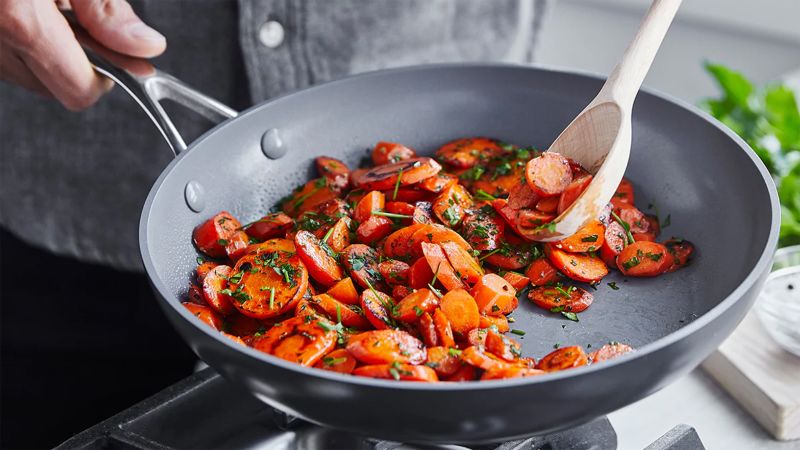
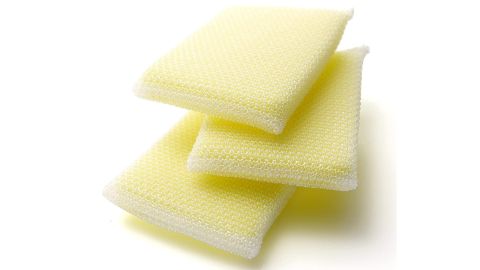
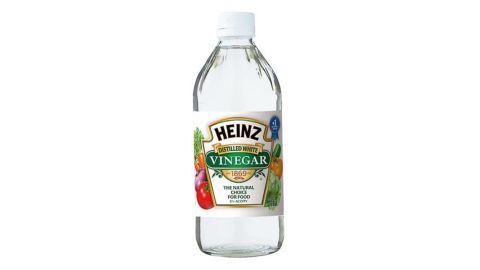
More News
Maersk Says Expanded Houthi Attacks Are Forcing More Delays
European Oil Giants Consider Shifting Their Listings to the U.S.
Opinion | Jail for the Chief? There’s a Better Punishment.